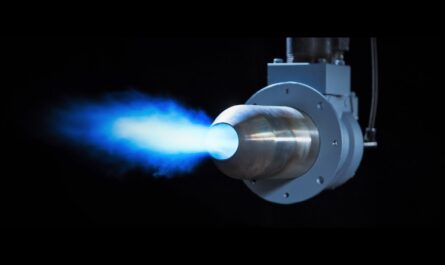
Introduction
Landmines and explosive remnants of war pose a serious threat in many post-conflict countries around the world. While manual demining is effective, it is also a long, tedious and dangerous process. Mechanical mine clearance systems provide an alternative that is faster and poses less risk to human life. In this article, we will explore the recent advances in mechanical demining technology and how it is transforming humanitarian demining operations.
Advantages of Mechanical Systems
Mechanical mine clearance systems have several key advantages over traditional manual demining methods:
Speed – Mechanical systems can clear land much faster than manual demining. This is because they can cover a larger area in less time compared to humans carefully probing the ground with metal detectors or prodders. Faster clearance means areas can be made safe for use sooner.
Safety – Mechanical systems remove deminers from the direct risk of encountering landmines and explosives. Unlike humans, machines are not put in harm’s way if they detonate a mine. This significantly reduces the danger to life compared to manual demining.
Sustainability – Machines can work for longer hours than humans and do not require regular breaks. They do not get tired, allowing clearance to continue around the clock if needed. This enhances sustainability and pace of operations.
Cost-effectiveness – While initial costs of mechanical assets are high, they become more cost-effective than manual demining over long term as they can clear far more land per dollar spent on operations.
Types of Mechanical Systems
There are different types of mechanical systems used for mine clearance based on their functionality:
Vegetation Cutters – These systems clear thick vegetation using flails, Tillers or mulching heads, exposing mine/ERW hazards and easing subsequent clearance. This is a critical pre-processing step.
Excavators – Large excavators equipped with tilting cutting wheels or excavating arms are used to excavate and sift contaminated soil and rubble in built-up areas.
Mine Comb – A plow-harrow combination that simultaneously breaks up and rakes soil to expose mines lying near the surface. Used mostly in tilled agricultural lands.
Mine Tillers – Tilling machines loosen and aerate topsoil using rotary tillers or chains to bring buried mines to the surface, allowing their safe removal.
Mine Rollers – Heavy drum rollers crush pressure-mounted mines lying on the surface or just below. Used prior to vegetation cutting in vegetated areas.
Sifting and Raking – Non-teeth raking machines sift and comb topsoil to collect mines and UXO on the surface or shallowly buried.
The appropriate mechanical asset is chosen based on terrain conditions, mine types and depth of contamination. Often, a combination of different systems is deployed in a given task to fully process an area.
Latest Technological Advances
Continuous innovation is improving the effectiveness of mechanical demining systems:
– GPS navigation and mapping allows machines to precisely clear defined areas according to clearance plans without missing any spots.
– Sophisticated computer control permits remote or autonomous operation from a safe distance, further reducing risk to humans.
– Multi-sensor arrays using metal detection, ground penetrating radar and other technologies enable machines to accurately locate scattered landmines and UXO.
– Enhanced mine-resistant armor protects machine components, allowing continued operation even after limited detonations. Self-sealing hydraulic systems prevent fluid loss.
– Advanced tillers, cultivators and mulching heads more efficiently cut heavy vegetation and break up hard ground, exposing buried objects.
– Larger excavators and mine rollers scale up clearance rates in wide area reduction operations ahead of subsequent technical survey.
– Precision sifting screens and rakes collect even smallest mines and ERW items on the surface or in shallow topsoil layers.
Such innovations are driving greater reliability, productivity and cost benefits from mechanical assets. When coupled with appropriate quality assurance, they are revolutionizing modern humanitarian demining programs.
Case Study: Cambodia
Cambodia remains one of the most mine-affected nations in the world due to decades of conflict. To meet its clearance goals, large-scale use of mechanical systems was indispensable alongside manual demining:
– From 1992-2019, over 4,450 square km of suspected mined areas were cleared, assessing over 25 million mines/ERW.
– Mechanical assets accounted for 15-20% of total clearance annually or 200-300 square km/year on average.
– Villagers were trained to operate modified agricultural tractors fitted with specialized tillers or rakes, pre-clearing around 170 villages / year.
– Larger organizations deployed excavators, rollers, mulching machines from various manufacturers to efficiently prepare vast minefields for manual teams.
– Innovations like dual-sensor detection excavators and remote-controlled tillers scaled up productivity while ensuring safety.
The Cambodian case demonstrates how a carefully integrated mechanical and manual approach can rapidly render a nation mine-impact free, paving the way for post-conflict rehabilitation and development.
Conclusion
As mine action evolves, Mechanical mine clearance systems demining will remain a core pillar of efficient humanitarian mine clearance moving forward. Continued technological innovations and research synergizing machines with manual and animal detection methods hold promise to accelerate global demining efforts and achieve the U.N.’s goal of a mine-free world by 2025. With sustained investment and cooperation, we are on track to significantly lessen the threat of landmines and UXO to civilians in all contaminated regions in the coming decade.
*Note:
1. Source: Coherent Market Insights, Public sources, Desk research
2. We have leveraged AI tools to mine information and compile it



